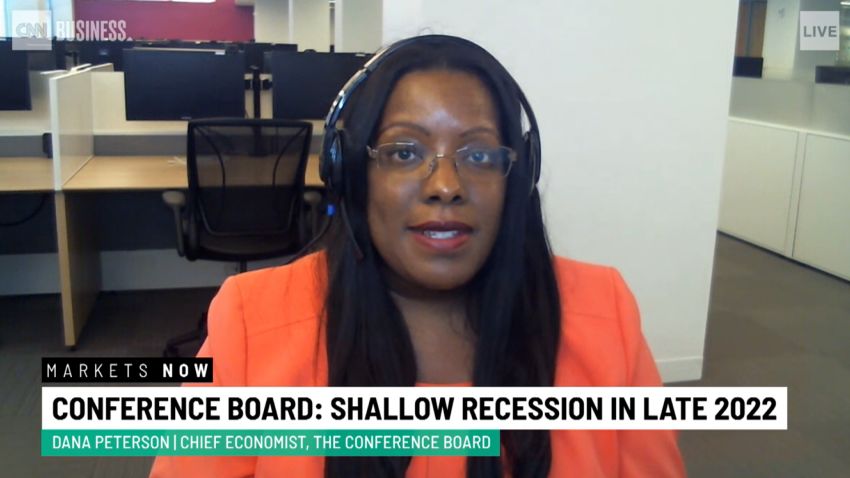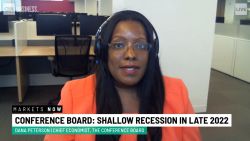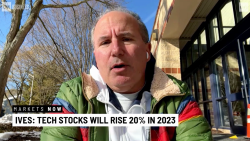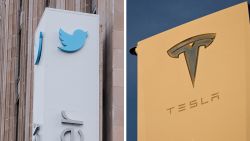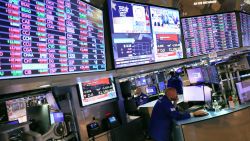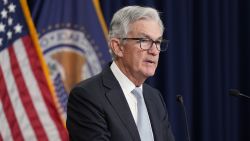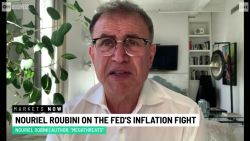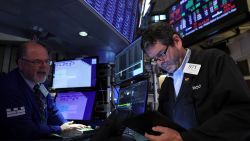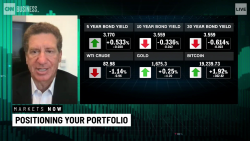A version of this story first appeared in CNN Business’ Before the Bell newsletter. Not a subscriber? You can sign up right here. You can listen to an audio version of the newsletter by clicking the same link.
There appears to be some confusion about the trajectory of prices in the US. That’s partially because month-over-month inflation eased in July while year-over-year, it remained near historic highs.
That raises an important question for consumers and investors alike: Is inflation peaking or not?
The answer, according to the market analysts, is probably. But there’s still a long way to go before we are where we want to be.
First of all, we need to remember that the ‘I’ in CPI and PPI stands for index. That means that shrinking inflation could come from prices falling in some sectors but not others. And that’s exactly what’s happening. Energy prices have dropped significantly over the last two months, dragging the top-line inflation numbers down along with them. But the costs of food, shelter and nearly every other commodity are increasing.
That’s worrisome because it means that “sticky” inflation is here. Shelter, healthcare and education prices all remained elevated, and those sectors tend to adjust their prices more slowly — so once they increase, they tend to stay high.
“We believe the worst of energy and supply chain inflation is behind us. However, the persistence of sticky categories will likely help keep inflation in the 5.5% to 6% range by the end of the year, mirroring trends across the globe,” said Scott Ruesterholz, a portfolio manager at Insight Investment, which has $1 trillion in assets under management.
It’s likely that we’ve reached peak inflation, agreed Charlie Ripley, a strategist at Allianz Investment Management. “However, we would caution that while the trend is improving, we have a long ways to go to get back towards [the Fed’s target goal of] 2% inflation.”
Morningstar and the IMF both predict a return to normal by the end of 2023 or beginning of 2024. The Fed agrees: in its most recent economic projections from June, the central bank predicted that it would be within its target rate of 2% inflation by 2024.
So price increases are easing but it’s going to take a while to get back to what the Fed considers acceptable.
The market digested this news as mostly positive. Investors expect rates to increase, but at a slower pace. They now expect a 50 basis point hike in September, down from 75 basis points less than a week ago.
Still, they still don’t believe the United States will avoid a recession.
About 90% of traders see one as somewhat to highly likely, and 74% anticipate it will begin this year, according to a recent Charles Schwab Trader Sentiment Survey.
Thankfully, they don’t see an extended timeline for consumer pain.
Most traders expect a recession would last less than one year just as they expect inflation to ease by the end of 2023.
Renters are getting slammed
Americans are struggling to keep roofs over their heads as rental costs have grown at their fastest pace in more than three decades. The median cost of a monthly rental is now over $2,000 for the first time ever.
Inflation is certainly to blame for the crisis, but a perfect storm has long been brewing. Americans rushed back into cities as pandemic restrictions eased, exacerbating a lack of supply in urban areas that were already facing housing shortages. Mortgage rates have jumped because of the Federal Reserve’s interest rate hikes, keeping many would-be buyers stuck in the rental market.
Landlords are taking advantage of the lack of supply and huge increase in demand and are raising prices across the board.
The end of Covid-era rental assistance programs and eviction moratoriums have made it easier for landlords to kick renters who can’t afford higher prices to the curb. About 5.4 million households, or 40% of those that aren’t current on their rent, said they will likely be evicted within the next two months, according to a Census Bureau Study in July. That’s the largest share since the survey began in 2020.
As the cost of living grows across the board, renters find themselves having to make choices between affording shelter or other necessities.
Rents in Manhattan have reached a record high for the sixth month in a row, reported my colleague Anna Bahney. The median rent surged to $4,150 in July, up nearly 30% from a year ago.
In New York City, landlords generally ask that renters make an annual salary equal to 40 times their rent. That means the median renter in Manhattan is expected to make $166,000 a year. The median household income in NYC is $67,000.
Analysts don’t see the rent increases ending in NYC without government intervention. “Many people are hoping that after rental activity peaks in August, there will be some improvement in affordability,” said Jonathan Miller, president and CEO of Miller Samuel. “But the only way I see that happening is if the Fed’s baseball bat to the economy inflicts more damage in the form of job losses. That isn’t a desirable scenario.”
A full backpack but an empty wallet
Parents all over the US are breathing a sigh of relief as school resumes and children are once again occupied during the daytime hours. That is, until they receive their back-to-school shopping lists.
Klover, which collects spending data from more than 3 million consumers as well as point of sale pricing data, looked at year-over-year price changes for the most common items on back-to-school shopping lists. They found that the price tags on goods ranging from glue, markers, pens and tape to backpacks, sneakers and even underwear have jumped significantly over the years.
The price of scotch tape has surged more than 70% this year, reports my CNN Business colleague Parija Kavilanz. The price of Sharpies and Elmer’s Glue have risen by 55% and 30%, respectively. BIC pens will cost you an extra 12% this year. Even a pair of Hanes underwear will cost about 7% more than it did last year.
Parija did find one silver lining: Crayola crayon prices have actually trended lower this year.
Up next
The University of Michigan consumer sentiment survey is out at 10am ET.

